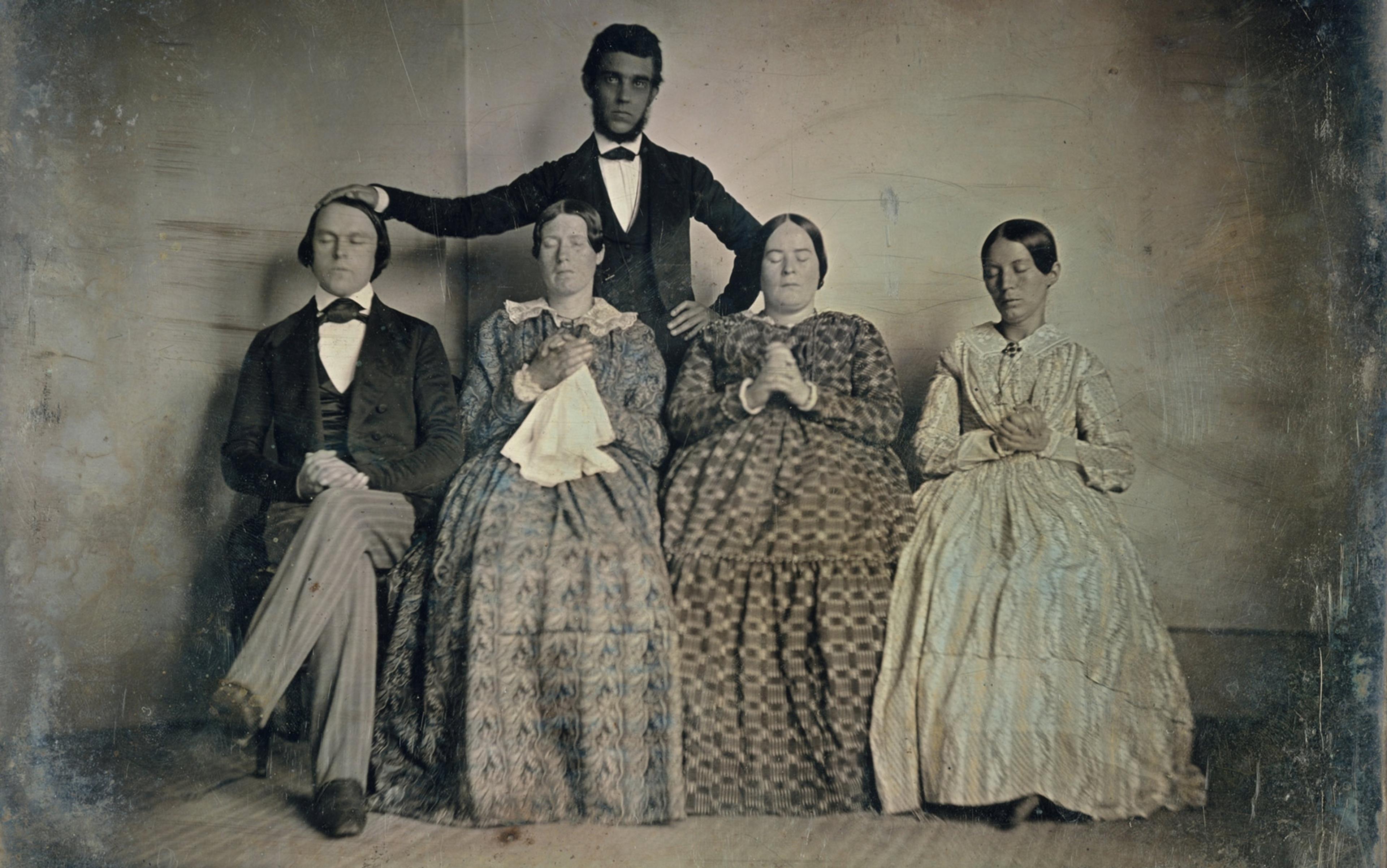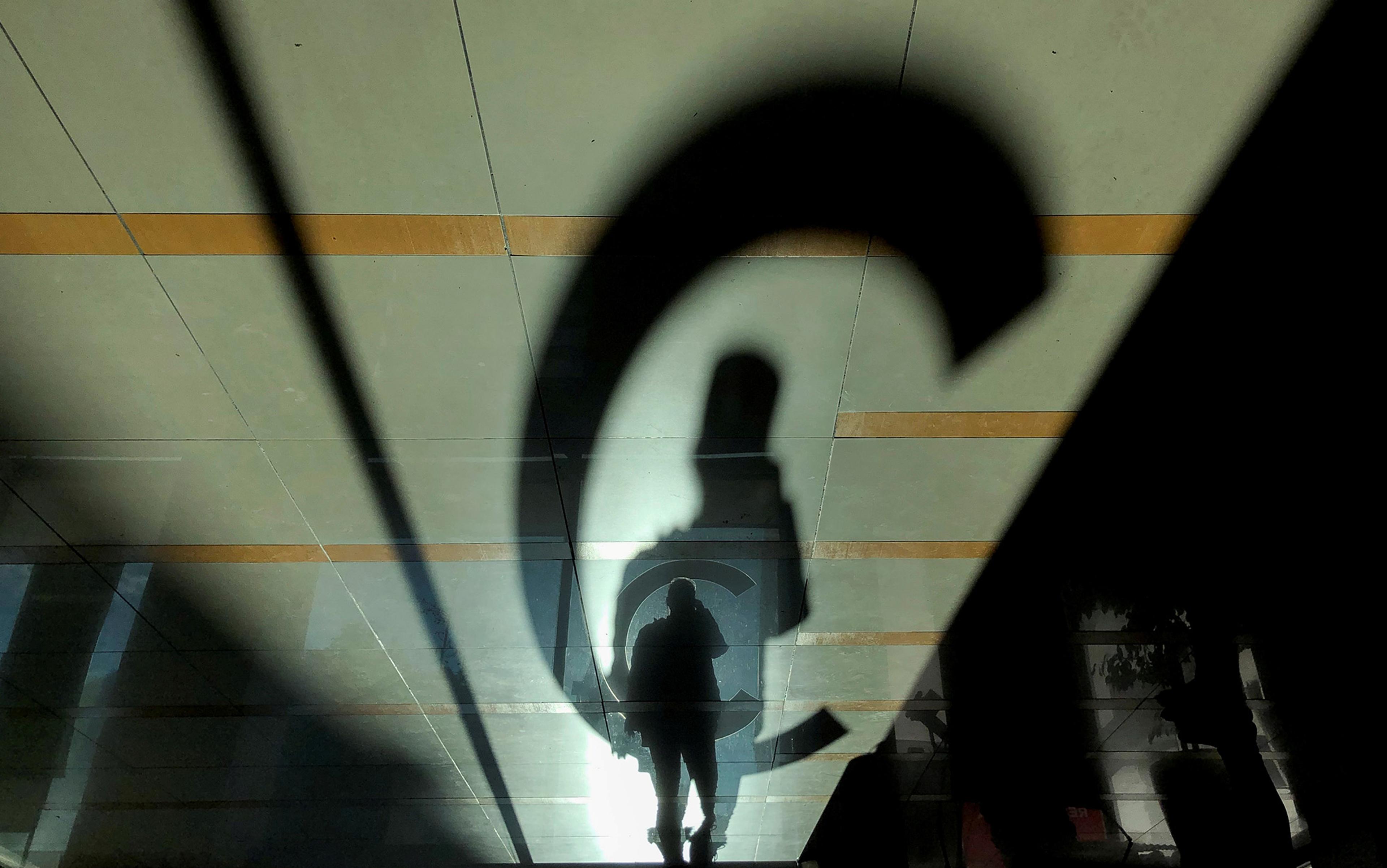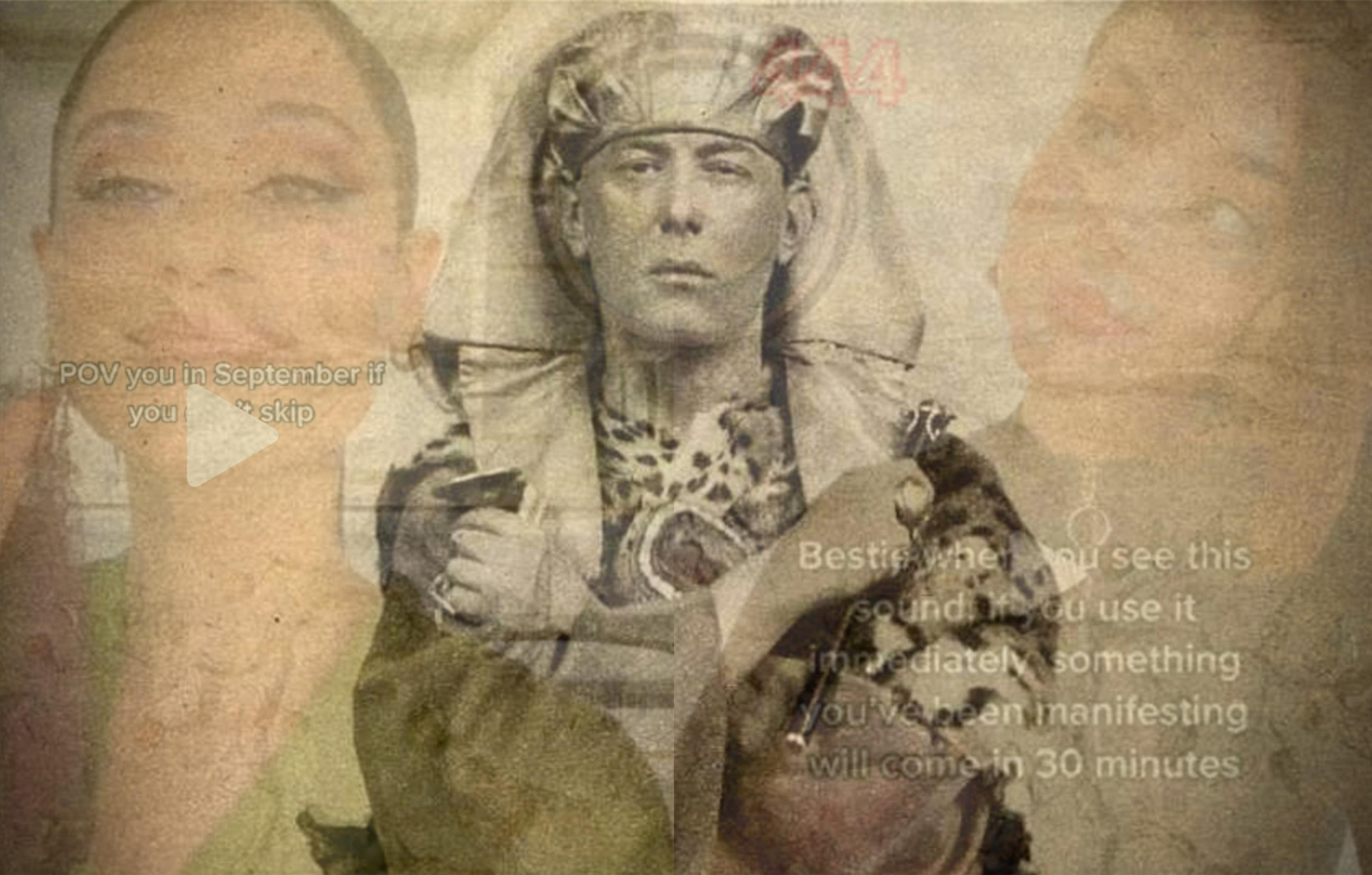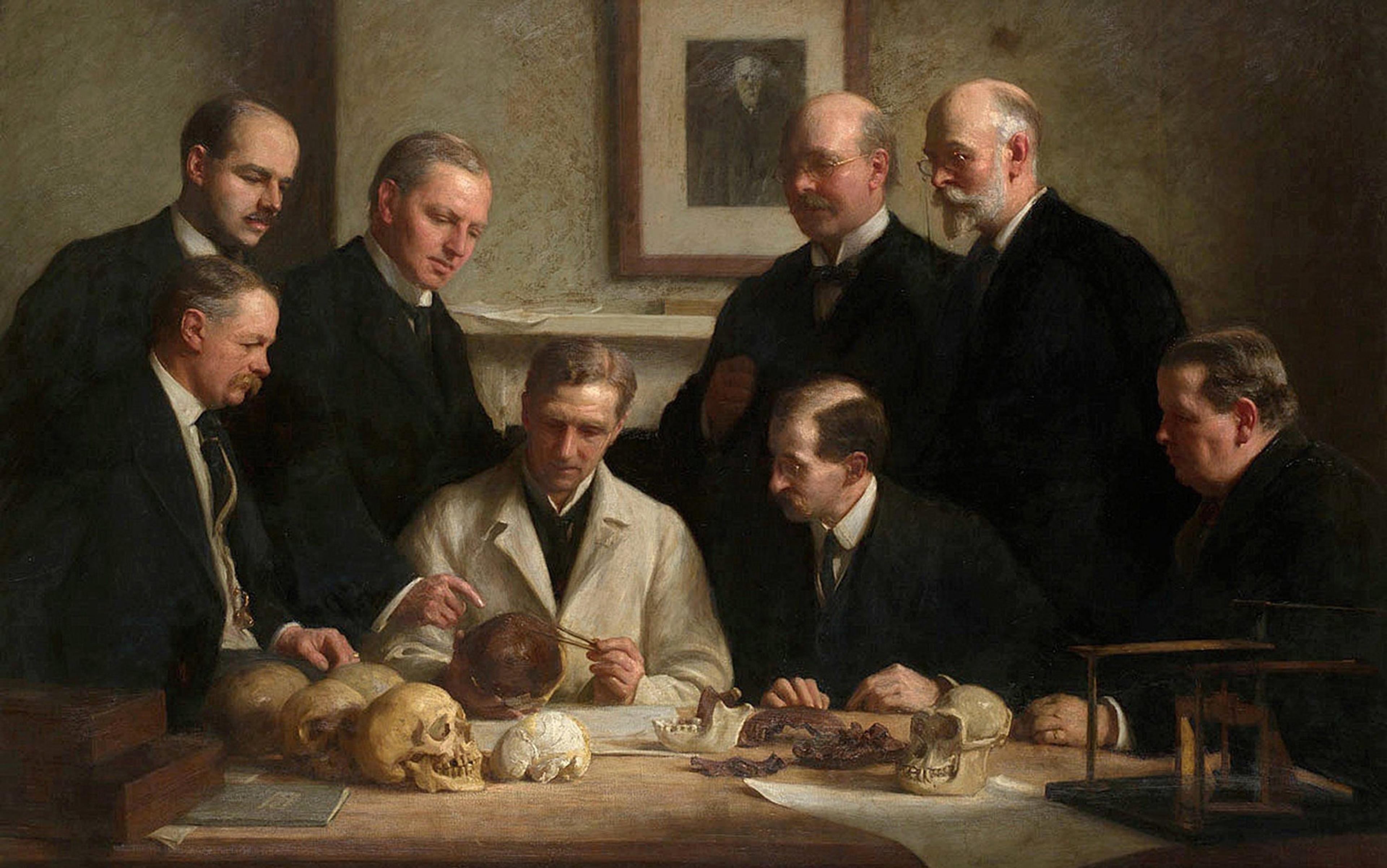‘Bunk’ means baloney, hooey, bullshit. Bunk isn’t just a lie, it’s a manipulative lie, the sort of thing a con man might try to get you to believe in order to gain control of your mind and your bank account. Bunk, then, is the tool of social parasites, and the word ‘debunk’ carries with it the expectation of clearing out something that is foreign to the healthy organism. Just as you can deworm a puppy, you can debunk a religious practice, a pyramid scheme, a quack cure. Get rid of the nonsense, and the polity – just like the puppy – will fare better. Con men will be deprived of their innocent marks, and the world will take one more step in the direction of modernity.
Debunk is a story of modernity in one word – but is it a true story? Here’s the way this fable goes. Modernity is when we finally muster the reason and the will to get rid of all the self-interested deceptions that aristocrats and priests had fobbed off on us in the past. Now, the true, healthy condition of human society manifests itself naturally, a state of affairs characterised by democracy, secular values, human rights, a capitalist economy and empowerment for everyone (eventually; soon). All human beings and all human societies are or ought to be headed toward this enviable situation. Some – and these are often non-Western people, people of faiths other than Christianity, people of colour – have regrettably gotten themselves faced in the wrong direction. They are still ‘barbaric’ or ‘medieval’ or even ‘primitive’. Maybe they are even getting more so. Turns out the debunking will have to continue. We’ll have to keep de-worming on an individual, an institutional, or a geopolitical scale until everyone is all right.
But scholars have been pointing out for some time just how far off this picture is. These scholars study not just secularisation, but what we imagine secularity to be; not just modernity, but what we think we ‘aim at’, as the cultural anthropologist Talal Asad puts it, when we say we are modern. There is no previously existing or natural secular order that will assert itself when we get the bunk out, a fantasy that the philosopher Charles Taylor calls a ‘subtraction story’; instead, a secular order has to be invented. There is no neutral, universal goal of progress toward which all peoples are progressing; instead, the claim that such a goal ought to be universal has been a means of exploiting and dispossessing supposedly ‘backward’ peoples.
Even on the individual scale, debunking is not the simple scene of deworming that we might be tempted to picture. What we should imagine instead of an impartial skeptic is a person who gets a charge out of being the rational member of the exchange – someone who is drawn, for reasons that might or might not be clear to him or her, and that are probably difficult to articulate, to the drama of unmasking. The adversarial scene of debunking breaks down into a strange collaboration between debunker, charlatan and dupe. This collaboration leaves us with a different way of thinking about ‘modernity’ itself. That’s the argument I make in my book, Credulity: A Cultural History of US Mesmerism (2018).
In 1837, Loraina Brackett left her home in Dudley, Massachusetts to enrol at the New England Institution for the Education of the Blind in Boston. Brackett, who had been blinded in an accident a few years previously, would be a ward of the state. On the way, she made the fateful decision to stop in Providence, Rhode Island to see friends. Providence was an important centre of the textile industry and the ‘head quarters’ of mesmerism in the United States, according to the writer James Freeman Clarke.
Mesmerism, a technique of entrancement and mind control popular in the US from the 1830s through the 1850s, was based on the idea that an invisible substance, something like electricity, coursed through the nerves of every human being. This substance could be manipulated in another person by staring at him or her, or performing ritualised gestures. Control the fluid, and you controlled the mind: if you could adequately affect a subject in this way, you could modify behaviour, plant ideas or suggestions, and even, by a complex mechanism, produce clairvoyant ability.
Brackett subjected herself to mesmerism during her stay in the hope of relieving her many medical problems since the accident. She turned out to have an aptitude for a developing subset of mesmeric practice called ‘travelling clairvoyance’, in which subjects were taken on guided spirit-walks in places they had never been. It must have looked a little bit like watching someone wearing a virtual reality headset, to make a contemporary analogy. The entranced Brackett would walk circles around a parlour while her spirit, or imagination, was seeing the streets of a distant city. She would reach out to touch a wall, or turn her gaze toward a beautiful building, except that the wall and the building weren’t there. Brackett became famous enough for these feats that tourists came to watch her take her spiritual tourist excursions. You had to know an intermediary who would introduce you to her. Then you could call on her in Providence, where you could guide her, in spirit, wherever you liked: to a city you knew well and she didn’t, or to your own home, where you could test whether she could see the furnishings of your parlour and the contents of your private drawers.
William Leete Stone, a journalist and abolitionist, caught wind of this marvel. Stone was a well-known debunker. In 1836, he had attacked a notorious anti-Catholic hoax, the Maria Monk affair, in which a woman claimed to have escaped from a Montreal convent that was running a prostitution ring (all lies). And he had written a whole book about the cult of the Prophet Matthias, who in the 1830s induced his followers to give up their life savings and follow him to Sing-Sing island. Stone ridiculed animal magnetism in the pages of the newspaper he edited, the New-York Commercial Advertiser. He determined to debunk Brackett’s clairvoyant abilities. But instead he became converted to her cause.
She got it mostly wrong. He concluded that she had ‘gone into a wrong house’
Credulity – excessive belief – somehow changed sides in Stone’s story. He went to Providence to set mesmerism down ‘as the work, if not of credulity and imposture, at least of mental excitement, sympathy, and delusion’. He ended up being himself accused (in the words of The Quarterly Christian Spectator) of ‘headlong, unhesitating credulity’. Stone had seemed to be a public-spirited debunker, and mesmerism was an obvious candidate for debunking. Yet he had not delivered. People familiar with Stone’s career were shocked. ‘Can he be serious?’ asked the editors at the Albany Evening Journal. What had happened?
The obvious hypothesis might be that Brackett’s wiles proved too much for him: she was simply too good at deceiving. But this answer doesn’t hold up, as David Meredith Reese, author of Humbugs of New-York (1838), showed when he analysed the case. Like Stone, Reese was a well-known debunker – but before you imagine a 19th-century version of today’s New Atheists, consider two facts: Reese was a Methodist minister, and the abolitionist movement was a ‘humbug’ according to him. Neither an atheist nor a Leftist, Reese nonetheless assumed the role of modernity’s champion in this dust-up. He did think of himself as modern, too; it dismayed him that ‘humbugs receive countenance and patronage … as late in the 19th century as the year 1837’.
Reese analysed Stone’s account of his journey with Brackett, and nothing about that account suggested a skilled debunker who had finally met his match in a brilliant charlatan. As was usual with Brackett’s visitors, Stone accepted the task of escorting her on her spiritual journey. His job was to take Brackett on a guided meditation of sorts, narrating a flight to New York and a stroll up Broadway to Stone’s own residence. Imaginary for him, this journey was to become real for her. If mesmerism worked, then she ought to be able to describe objects of which she had no independent knowledge. She had never been to New York City, let alone to Stone’s private study.
For the experiment to work properly, Stone ought to have been careful not to give Brackett any information that would allow her to infer facts that were otherwise unknown to her. He did a terrible job. His questions to Brackett were, as Reese noted, ‘leading in their character, almost without an exception’. Standing outside a landmark Broadway house, he asked if she observed anything special about it – statues, for example. ‘Do they resemble lions?’ he asked. Why as a matter of fact, she said, they did! When they reached his house in spirit, he took her into the basement, and asked her about the servants’ races, ages and genders. She got it mostly wrong. He concluded that she had ‘gone into a wrong house’. He then led her across the street to his own basement.
So the question of how Brackett knew what she knew is fairly easy to answer: Stone told her. Some other questions then become difficult to answer. Why did he tell her? Why didn’t he see that he was telling her? And as for Brackett, was she or wasn’t she engaged in conscious deception? Would she have maintained that her knowledge truly came from animal magnetism? If ‘bunk’ was a parasite on a healthy organism, why did it take only one afternoon’s worth of unconvincing lies to render a seasoned skeptic totally incapable of telling the puppy from the worm?
Whether or not we can give satisfying answers to these questions depends on the picture of the human agent we adopt. We won’t get particularly satisfying answers if we imagine the people in this scene as what Asad has called ‘secular agents’. Secular agency is the picture of selfhood that Western secular cultures have often wanted to think is true. It’s more an aspiration than a reality. Secular agents know at any given moment what they do and don’t believe. When they think, their thoughts are their own. The only way that other people’s thoughts could become theirs would be through rational persuasion. Along similar lines, they are the owners of their actions and of their speech. When they speak, they are either telling the truth or lying. When they act, they are either sincere or they are faking it. Something like this model of agency not infrequently accompanies the fable of modernity with which I began. The two conceptions make sense together. Modernity, in this picture, is when we take responsibility for ourselves, freeing both society and individuals from comforting lies.
My guess is that this picture of agency both does and does not feel right to many readers. If you are alive right now, reading in English, then there is a good chance that you have spent your life at least conversant with – if not awash in and deeply influenced by – secular pictures of the world and the self. (That’s true even if you are a religious believer. As the anthropologist Tanya Marie Luhrmann has argued, religious belief now takes place in the context of and in conversation with secularity.) So you’re probably familiar with the demand that you should know, say and act on what you think; that you shouldn’t be anyone’s puppet. Maybe you bridle against these demands, or maybe you want to live up to them.
Wherever you stand, though, I bet you can also think of some experiences that don’t fit this model. Maybe at some point you fell in love. Maybe you have ideas of yourself that came from your family – ideas that you hate, but that you can’t get rid of. Maybe you have some long relationships in which you know that there is a complicated set of agreements about what everyone will pretend is true. Maybe you’ve managed to psych yourself up in order to give a speech, or sparkle at a party, or be a clutch player, or seduce someone. For a while, you acted like someone else. It wasn’t really acting, in the sense of pretending, but at the same time it wasn’t really you.
Life includes a great many passages in which we place the demands of social bonds above strict truth. But don’t misunderstand me: I’m not just saying that we’re willing to lie for love. I’m saying that, in the context of some of the stories we tell collaboratively in our relationships with others, the question of lying or truth does not arise. We set it aside. We apply a different framework, something more like the framework we apply to fiction: we behave as if it were true. I call that framework credulity. We should imagine the actors in the Stone-Brackett drama as credulous agents.
What is credulity? In the first instance, it’s the word that mesmerism’s debunkers used for the state of excessive, almost pathological gullibility that they thought could alone explain why people would believe the bunk. But in interactions such as the one that Stone had with Brackett, it became clear that something more than gullibility was at stake. When Stone became ‘credulous’ toward Brackett, it wasn’t that he started believing really, really implausible lies. Instead, he stopped thinking in terms of truth and started thinking in terms of his relationship to her. Stone said in his account of their interaction that he ‘was not a positive believer’ in animal magnetism, ‘because I know not what to believe’.
His contemporaries mostly ignored this subtle point. But this statement of Stone’s is a good way of thinking about what happened to him. As Brackett’s guide on her spiritual flight to New York City, he had to convince her that she was really flying so that her ability to travel spiritually would kick in. The idiosyncratic theory was that the more she believed Stone’s fictional story of travel, the more it would – for her spirit, at least – come true. Telling Brackett a story she could believe meant negotiating with her sense of the plausible. Stone asked, for example, how she wanted to travel to New York. Would she, for example, like to take the steamboat then anchored in the Providence harbour? No, she said: she’d fly. Playing along, Stone suggested they step into a balloon. No, Brackett rejoined: she’d fly unaided. That sounded fine to Stone: ‘I am used to that way of travelling,’ he said. And off they went, him using his hands to pantomime buoying her up.
The more highly placed the con artist, the more his or her deceptions matter
Is this exchange anything other than ludicrous? Even though the subject matter of spiritual flight is far from ordinary, Stone was merely doing what a lot of us do all the time: he was judging how much contradiction the social bond would bear. Similarly, there is no need to think of Brackett as a deceptive mastermind. We can think of her instead as a person who was offered a role in a special kind of social game, the animal-magnetic seance, and who chose to take it. Animal magnetism as played between Stone and Brackett was something like improv comedy today. It was governed, for the most part, by the rule of ‘yes-and’. When I agree with you about the weather being unseasonably hot, I’m not just talking meteorology. I’m indicating to you and to myself that we agree, that we have a social tie. When I pick a fight with you about the dishes, I’m not just saying that I wish you would do them. I’m insisting that our bond be renegotiated. If we fight and resolve the conflict successfully, then we’ll go back to doing a certain amount of accommodating and nodding along until it’s time to shake things up again. There isn’t necessarily anything wrong with this.
And there can, on the other hand, be much that is right with this. Consider Brackett’s position. Actually, it’s not easy to consider Brackett’s position, because as a blind working-class woman, she didn’t have the same opportunities to get her story into print of which Stone, a prominent editor, availed himself. She never published an account of her experiences with animal magnetism. But some letters of hers are preserved at the Perkins Institute for the Blind, where she was later a student, and many people described the way they saw her using animal-magnetic trances over the course of the summer of 1837. It looks like she used them to relieve herself of some of the limiting expectations people had of the blind. In the animal-magnetic trance, Brackett could apparently read, see pictures and move about confidently, whereas in her ordinary state, she could do none of these things.
Which one was more true to her abilities? We can’t know for sure. Nonetheless, it is at least possible that it was the trance state. Brackett couldn’t see well enough to support herself through work. She needed to depend on friends and charitable strangers. That meant she needed to present herself in a way that accorded with their understanding of the social role ‘blind person’. If they could not accept that someone who was blind – and thus legitimately in need of assistance – might be able to see in a limited way, or might be able to move around confidently, then she would have been obliged to curtail these activities. The late disability theorist Tobin Siebers called this the ‘masquerade’ of disability: the obligation to perform the disability, sometimes overperform it, so that it would be legible enough to secure the assistance that one genuinely needs. Let’s say that ordinary life involved a masquerade of disability for Brackett. In that case, animal magnetism, because it demanded that each participant in a seance play along with the suggestions of the others, might have been freeing for her to some extent.
Animal magnetism was a way of formalising a common human capacity for suspending judgment and playing along in the name of social bonds. I use the term credulity for that capacity because I want to draw attention to the fact that our commitment to secular agency, and to the activities of debunking that secular agency implies, can often misrecognise this capacity as belief. It isn’t belief, not really; it’s neither believing or disbelieving, but bonding through the construction of a shared story. Debunkers often dismiss such bonding as credulity in the bad sense – as excessive belief. Animal magnetism is an opportunity to ask what baby is getting thrown out with this bathwater.
What then is debunking? It can be a necessary way of setting the record straight. I’m by no means opposed to truth-telling. We need fact-checkers. The more highly placed the con artist, the more his or her deceptions matter. In such cases, it makes sense to insist on hewing to the truth, and it might not be very important that, in so doing, we are setting aside a significant dimension of what it means to be human: the dimension of credulity as I am defining it here.
But the social dynamics of debunking should not be overlooked, either, especially when the stakes aren’t particularly high – when the alleged lie in question is not doing a whole lot of harm. At these times, what is debunking? It’s a performed refusal to play along, and to recognise the value of playing along. It’s the announcement that one rejects the as-if mode in which we do what social bonds require, and not what strict truth requires. It’s an announcement of that rejection. But the reality behind the announcement might be more complicated.
Even debunkers might not be quite as firmly opposed to that as-if mode as their stance suggests. Consider this. The debunker might be someone who aspires to secular agency: to that happy state of being the owner of one’s acts and the free thinker of one’s thoughts. But debunkers are no less aware than anyone else of the experiences that such a model explains poorly. In other words, debunking might be the way that they live out an attraction to credulity that they don’t quite want to acknowledge to themselves. Maybe, instead of being surprised at Stone’s conversion from skeptic to ally of animal magnetism, his contemporaries should have expected it from a career debunker such as him. Credulity was what he had been interested in all along.






